- Clone
- W19260A (See other available formats)
- Regulatory Status
- RUO
- Other Names
- Yes1 Associated Transcriptional Regulator, YAP65, Yes-Associated Protein YAP65 Homolog, Transcriptional Coactivator YAP1, Yes Associated Protein 1, COB1, YAP2, YAP, YKI
- Isotype
- Rat IgG2b, κ
- Ave. Rating
- Submit a Review
- Product Citations
- publications
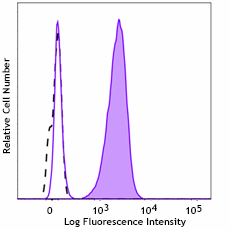
-

HeLa cells (positive control) (filled histogram) and Jurkat cells (negative control) (open histogram) were fixed and permeabilized using True Nuclear™ Transcription Factor Buffer (Cat. No. 424401) and intracellularly stained with PE anti-YAP1 (clone W19260A), or PE rat IgG2b, κ isotype control (open histogram, dashed line) (representative histogram for both cell lines) (Cat. No. 400636).
| Cat # | Size | Price | Quantity Check Availability | Save | ||
|---|---|---|---|---|---|---|
| 603653 | 25 tests | £141 | ||||
| 603654 | 100 tests | £278 | ||||
Yes-associated protein 1, or YAP1, is a transcriptional co-activator vital to cell proliferation and the regulation of apoptosis. YAP1 does not contain a DNA-binding domain and requires interaction with transcriptional factors, particularly TEA domain (TEAD) proteins, to regulate transcription. YAP1 is continuously shuttled between the nucleus, where it is primarily located when Hippo signaling is inactive, and the cytoplasm, where it is sequestered following phosphorylation of its various serine residues by the LATS1/2-MOB1 complex of the Hippo pathway or by kinases AKT, PRP4K, and CDK1. As a key effector of the Hippo signaling pathway along with its paralog TAZ, YAP1 is essential to the regulation of cell growth, stem cell maintenance, organ size, tissue homeostasis, regeneration, embryonic development, and the preservation of genome integrity following DNA damage. YAP1 also functions in the modulation of aerobic glycolysis and glutaminolysis pathways as well as amino acid metabolism. YAP1 can act as a tumor suppressor, usually through its interaction with p53 family proteins and promotion of apoptosis, but most commonly functions as an oncogene. Its overexpression and deregulation are characteristic of several cancers and it has been implicated in the initiation, proliferation, metastasis, metabolic reprogramming, immune escape, and therapy resistance of cancer cells. As such, YAP1 is a potential therapeutic target and prognostic biomarker.
Product DetailsProduct Details
- Verified Reactivity
- Human, Mouse
- Antibody Type
- Monoclonal
- Host Species
- Rat
- Immunogen
- Recombinant human YAP1
- Formulation
- Phosphate-buffered solution, pH 7.2, containing 0.09% sodium azide and BSA (origin USA)
- Preparation
- The antibody was purified by affinity chromatography and conjugated with PE under optimal conditions.
- Concentration
- Lot-specific (to obtain lot-specific concentration and expiration, please enter the lot number in our Certificate of Analysis online tool.)
- Storage & Handling
- The antibody solution should be stored undiluted between 2°C and 8°C, and protected from prolonged exposure to light. Do not freeze.
- Application
-
ICFC - Quality tested
- Recommended Usage
-
Each lot of this antibody is quality control tested by intracellular immunofluorescent staining with flow cytometric analysis. For flow cytometric staining, the suggested use of this reagent is 5 µL per million cells in 100 µL staining volume or 5 µL per 100 µL of whole blood. It is recommended that the reagent be titrated for optimal performance for each application.
- Excitation Laser
-
Blue Laser (488 nm)
Green Laser (532 nm)/Yellow-Green Laser (561 nm)
- Application Notes
-
For ICC, we recommend 4% PFA fixation followed by permeabilization with ice-cold methanol or 0.5% Triton-X. Fixation and permeabilization with only methanol is not recommended.
- RRID
-
AB_2927898 (BioLegend Cat. No. 603653)
AB_2927898 (BioLegend Cat. No. 603654)
Antigen Details
- Structure
- YAP1 is a 504 amino acid protein with a predicted molecular weight of 54 kD.
- Distribution
-
Ubiquitous/ Primarily nuclear localization at low density and primarily cytoplasmic localization at high density
- Function
- Transcription
- Interaction
- TAZ, TEAD1/2/3/4, LATS1/2, YES, SRC, SMAD, p73, RUNX2, PAX3, ERBB4, CK1, ZO1/2
- Biology Area
- Cancer Biomarkers, DNA Repair/Replication, Stem Cells, Transcription Factors
- Antigen References
-
- Chen X, et al. 2020. Front Physiol. 11:389.
- Isfort I, et al. 2019. Sci Rep. 9:19704.
- Raj N and Bam R. 2019. Front. Cell Dev Biol. 7:159.
- Szulzewsky F, et al. 2021. Dev Biol. 475:205-221.
- Gene ID
- 10413 View all products for this Gene ID
- UniProt
- View information about Yap1 on UniProt.org
Related Pages & Pathways
Pages
Related FAQs
- What type of PE do you use in your conjugates?
- We use R-PE in our conjugates.
Other Formats
View All Yap1 Reagents Request Custom Conjugation| Description | Clone | Applications |
|---|---|---|
| Purified anti-YAP1 | W19260A | WB,IHC-P,ICC,ICFC |
| PE anti-YAP1 | W19260A | ICFC |
Customers Also Purchased
Compare Data Across All Formats
This data display is provided for general comparisons between formats.
Your actual data may vary due to variations in samples, target cells, instruments and their settings, staining conditions, and other factors.
If you need assistance with selecting the best format contact our expert technical support team.
-
Purified anti-YAP1
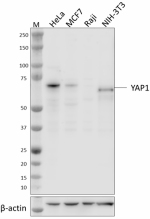
Whole cell extracts (15 µg total protein) from HeLa, MCF7 (p... 
Whole cell extracts (15 µg total protein) from HeLa cells (p... 
Daudi cells (negative control) (panel A) and HeLa cells (pos... IHC staining of purified anti-YAP1 (clone W19260A) on human ... 
HeLa cells (positive target) were stained with 0.25 µg/test ... 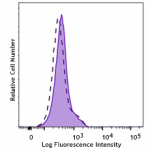
Daudi cells (negative target) were stained with 0.25 µg/test... -
PE anti-YAP1
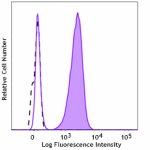
HeLa cells (positive control) (filled histogram) and Jurkat ...
 Login / Register
Login / Register 









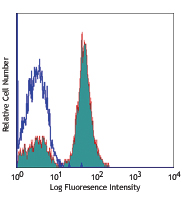
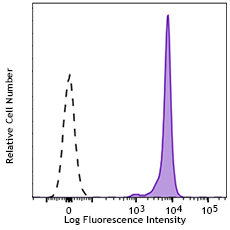
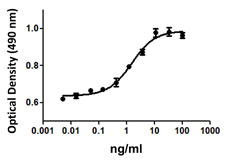
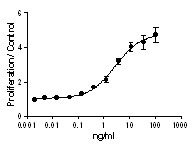




Follow Us